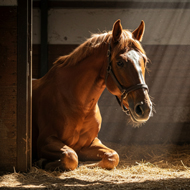Study reveals benefits to laparoscopic ovariectomy
The findings support existing research on the benefits of laparascopic procedures.
A new study has revealed benefits to laparoscopic ovariectomy over an open ovariohysterectomy when neutering female dogs.
Researchers suggest that a laparoscopic ovariectomy (LAP-OVE) procedure resulted in fewer postoperative complications and unusual behaviours when compared to the more traditional open ovariohysterectomy via celiotomy (OVH-CEL).
The project, part-funded by BSAVA PetSavers, saw researchers from the University of Nottingham, Guide Dogs and Feldon Veterinary Centre collaborate to compare the procedures. The research team analysed statistics from 519 bitches which were neutered by either LAP-OVE or OVH-CEL at four UK veterinary practices.
Researchers sought to review retrospective data on both the perioperative and postoperative outcomes in dogs undergoing each of the procedures.
The findings revealed a lower rate of wound redness or swelling at the surgical site following a LAP-OVE compared to an OVH-CEL. Statistics showed that 16 per cent of LAP-OVE patients experienced redness and swelling compared to 36 per cent of OVH-CEL patients.
Dogs neutered by LAP-OVE also appear to be less likely to encounter intraoperative complications, with two per cent of dogs neutered by LAP-OVE seeing such issues compared to three per cent of those neutered by OVH-CEL. Similarly, post-operative complications were recorded at 0.5 per cent in the LAP-OVE group and one per cent of the OVH-CEL group.
There was also evidence that unusual behaviours, such as inappetence or discomfort, appeared less often in dogs which had been neutered by LAP-OVE.
Researchers say that this supports existing research, which finds that laparoscopic procedures in general will have fewer postoperative complications than open surgery when performed by an experienced veterinary surgeon.
Rachel Moxon, lead author of the study, said: “While there is already evidence from other studies relating to complications following neutering surgeries in bitches, this is the first time that the outcomes have been compared between what are anecdotally reported to be the two most frequently performed neutering surgeries for female dogs in the UK.
“The results will be of interest not only to vets, but for pet owners and others that have to make choices about neutering their dogs. Understanding the surgical risks is an important factor to consider, and decision making is made easier when it can be informed by evidence.”
The full study can be found in the Journal of Small Animal Practice.
Image © Shutterstock



 Zoetis UK has called on horse owners to complete a short online survey about their horse's behaviours.
Zoetis UK has called on horse owners to complete a short online survey about their horse's behaviours.